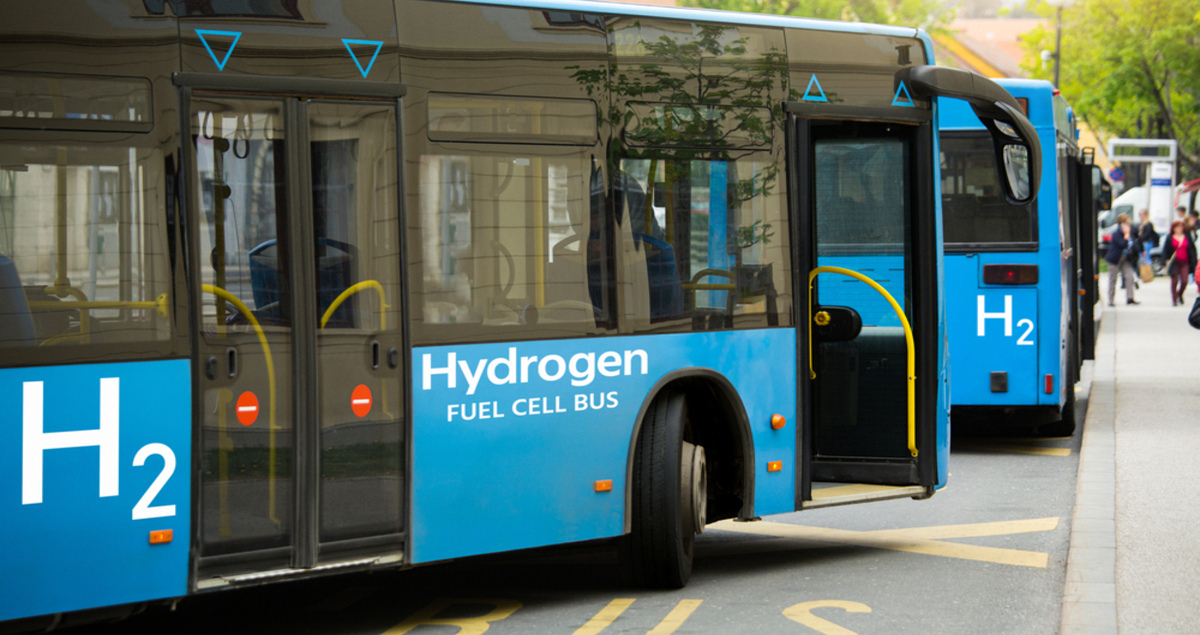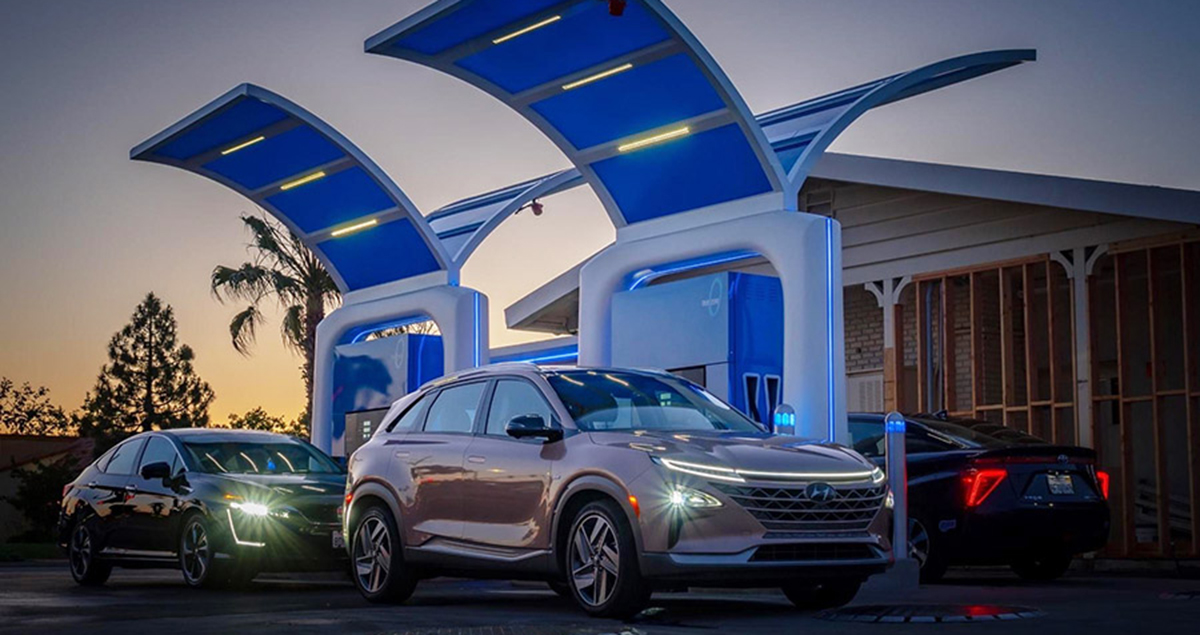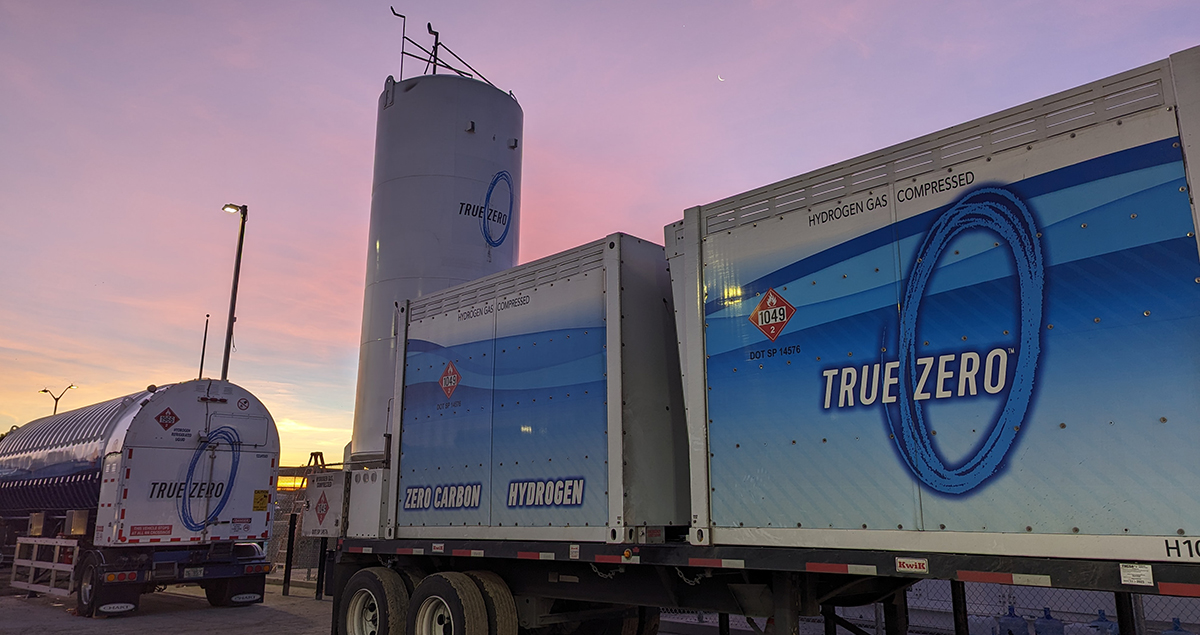The road to decarbonization: Hydrogen in heavy-duty transport

Will the future of heavy-duty transport be powered by hydrogen? Or electricity? Or e-fuels?
As economies work to become greener, policymakers and businesses are facing tough choices when it comes to the buses and trucks that rely on diesel engines and are highly challenging to decarbonize.
Hydrogen is a leading contender to replace fossil fuels in the heavy-duty transport sector, as it has higher energy density than fully electric batteries, making it suitable for vehicles carrying weighty loads long distances. It also creates no emissions when consumed and is efficient and quiet.
“For me, hydrogen is the game changer for heavy-duty transport,” says Joel Ewanick, Founder and Executive Chairman of California-based hydrogen retailer FirstElement Fuel, who believes that a true solution will need to rely on a combination of different fuels.
“All these technologies can coexist, and they should coexist,” he says. “Each one has advantages and disadvantages.”

The rise of hydrogen
Hydrogen can be produced through various methods, including electrolysis or reforming natural gas.
And hydrogen in heavy transport isn’t new — the Chicago Transit Authority launched its first hydrogen fuel cell bus in 1995. Multiple cities across the world have gone on to embrace hydrogen fuel cells in transport as a way to decarbonize and reduce pollutants.
Building the value chain
Although global hydrogen use is increasing, demand is concentrated in sectors that already use hydrogen, such as the chemical and refining industries. Furthermore, most demand is currently met by hydrogen produced by unabated fossil fuels.
That needs to change. Heavy-duty transport emissions need to peak very soon and start declining in the coming decade for the industry to reach key net zero milestones. Although trucks and buses represent only around 8% of vehicles, they are responsible for over a third of direct CO₂ emissions from road transport, and their emissions are still rising.
While manufacturers are increasingly on the front foot, with Volvo reporting progress on its road to commercializing hydrogen-powered fuel-cell trucks, the nascent hydrogen value chain creates a few challenges that must be overcome.

Potential roadblocks
All elements need to grow in sync to build that value chain.
At a top level, policymakers, governments and the private sector are all involved in building the right conditions to scale up green hydrogen production while bringing the cost down. But for an industry like heavy transport to transition to hydrogen, there needs to simultaneously be enough vehicles, enough hydrogen availability and enough hydrogen service stations along routes.
FirstElement Fuel is taking a leading role in the sector, building a network of 41 hydrogen fuel stations that are serving 15,000 customers a day throughout the state of California. And Executive Chairman Ewanick knows a thing or two about the industry, particularly the practical challenges it has faced over the last decade.
“We’ll dispense nearly 2 million kilograms of liquefied hydrogen in 2023,” he says. “No one else in the world is doing that much, so we know where the bottleneck is in the chain; it’s the liquefied hydrogen pumps at service stations.”
Just four years ago, there was only one liquefied hydrogen pump option in the world. FirstElement Fuel bought it and turned it into a working service station, but for Ewanick, the industry needs to invest more in honing the technology.
“We need alternatives. What we have is a Model T, but we need a Porsche 911 Turbo, and that’s why we’re working with Mitsubishi Heavy Industries (MHI) Group. We’re looking to build service stations with cryogenic pumps that make it economically feasible for us and the customer to embrace technologies that will cut emissions.”
MHI’s liquid hydrogen pumps are undergoing testing at FirstElement Fuel’s facility in Livermore, California. The two companies recently successfully reached 500 hours of operation on the long-term durability test of a liquid hydrogen pump designed for hydrogen gas stations.
The pumps are set to transform hydrogen service stations, according to Ewanick, because they meet the refueling needs of all hydrogen vehicle classes, including trucks and buses.

Industry buy-in
It’s not easy to be at the forefront of a burgeoning industry, and convincing the market to switch won’t happen overnight, Ewanick says.
“The US has around 4 million Class 8 trucks moving around the country, and because many of them are pretty old, their emissions are terrible. So that needs to change. But what is the incentive for SMEs to replace their trucks? It has to make economic sense for them, and they have to know that their trucks will still get where they need to go.”
The key to slashing emissions in the heavy-duty transport sector is to open up new green alternatives that can fit into an established network without jeopardizing cost or performance. FirstElement Fuel’s goal is to create multiple service stations that provide hydrogen at a price equivalent to diesel, and delivered at the same speed, or faster.
For them, liquid hydrogen pumps are the missing piece of the puzzle.
![]()
Learn more about MHI's 90 MPa class liquid hydrogen pump





